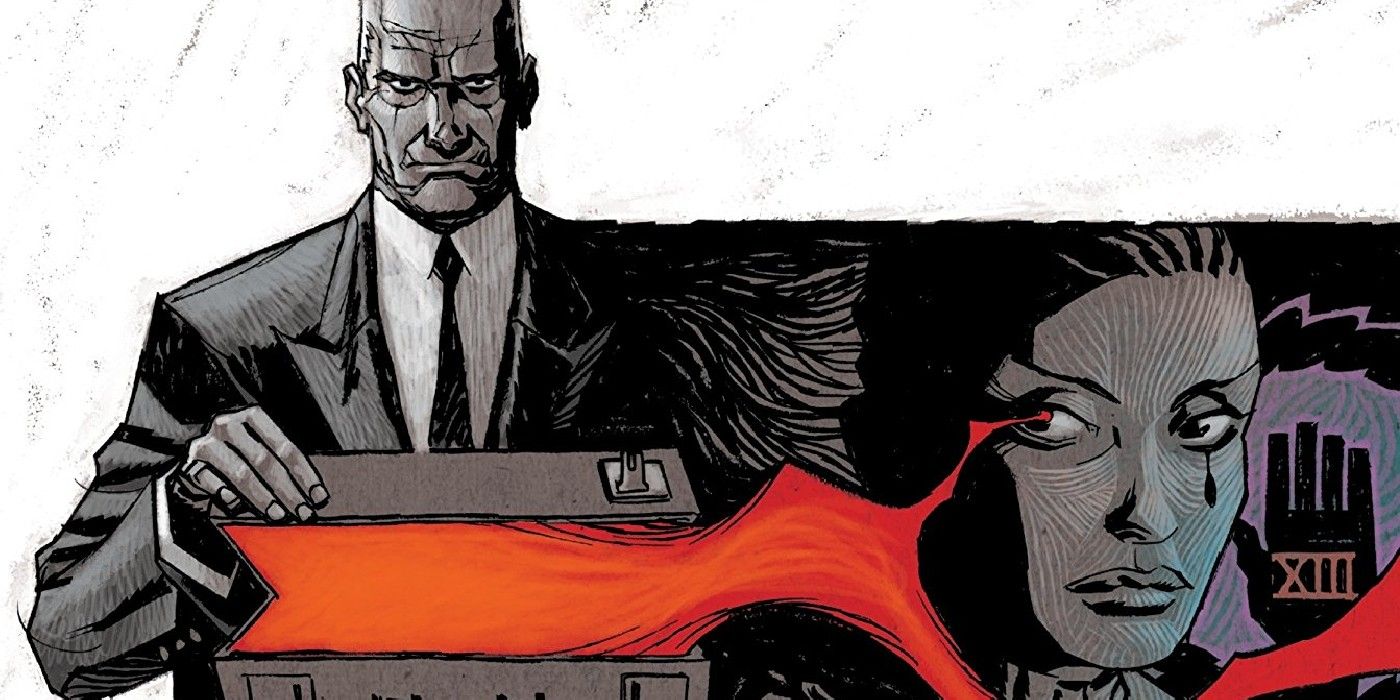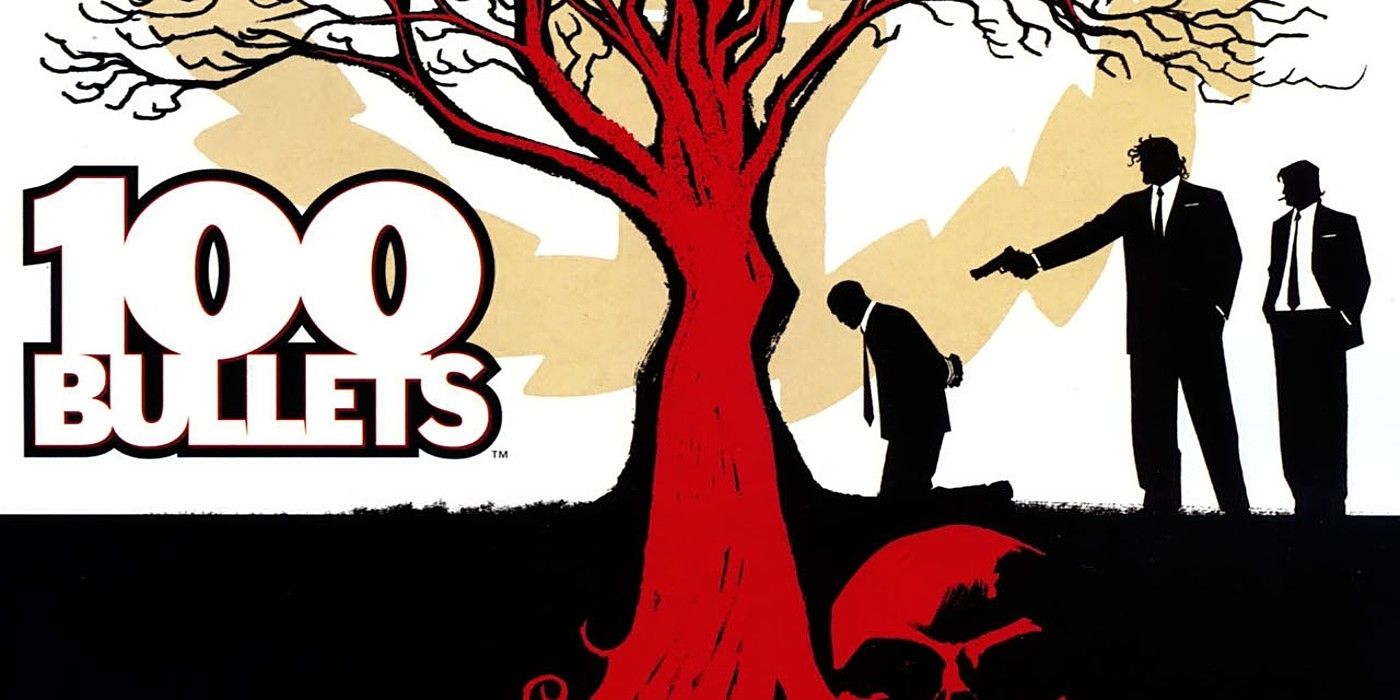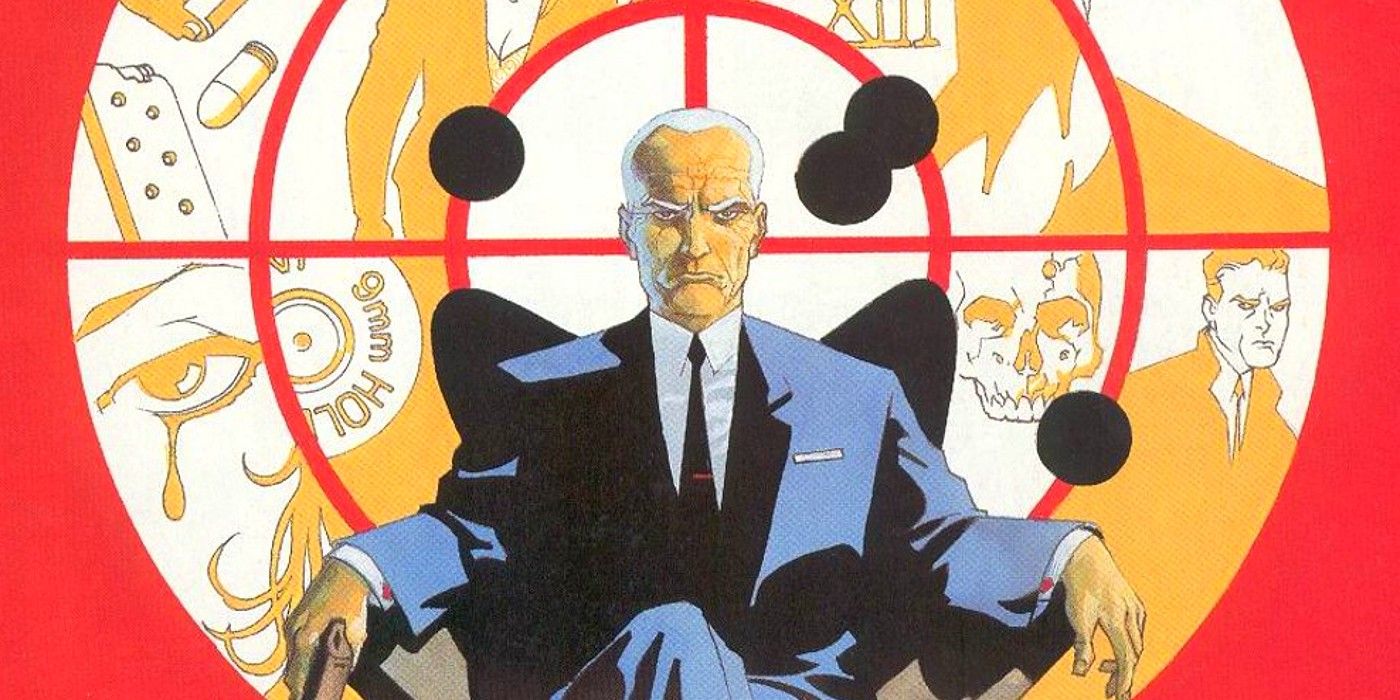Warning: this article includes some spoilers for 100 Bullets!
Written by Brian Azzarello (Joker, Superman) with art by Eduardo Risso (Batman, Before Watchmen), the groundbreaking, labyrinthine crime epic 100 Bullets spins around a central question: can 100 untraceable bullets ever make right out of wrong? Running in the pages of the legendary mature DC imprint Vertigo Comics from 1999 to 2009, 100 Bullets is a bold, baroque and brutal journey into blackest night alongside a rogues gallery of thieves, assassins and cold-blooded killers.
This decidedly mature series, winner of both the Harvey and Eisner awards and featuring all manner of sex and violence, is among the most innovative comics of the modern age, offering perhaps the starkest glimpse of the dark underbelly of contemporary culture available in the medium. In doing so, 100 Bullets blazed an unparalleled path in the annals of comicdom, remaining a highly praised but divisive work to this day. Since its Dickensian density and fractured storytelling make the series infamously difficult for first-time readers, here’s everything you need to know about 100 Bullets, Vertigo’s unrepentant rhapsody of villains.
What is 100 Bullets about?

The premise of 100 Bullets begins as a simple idea: a grizzled old man simply known as “Graves” walks up to a young woman, Dizzy Cordova, and presents her with a briefcase. Inside the briefcase is a gun with one hundred untraceable bullets, and a dossier on the real culprits behind the deaths of her husband and infant son, complete with irrefutable evidence. It is her choice what she will do with this information and newfound capacity for payback. Graves repeats this trick on other seemingly random beneficiaries, and Dizzy’s experience turns out to be one of the cleanest parables in the series, ethically speaking. As Azzarello and Risso plow their way through one hundred-issues worth of crime across the United States, the atmosphere only gets bleaker, and the action more intense.
If this collection of increasingly tragic vignettes has a central figure, it is sinister “Agent” Philip Graves, dispenser of supposed justice through his seemingly magic, federally-sanctioned firearms. From the outset, Graves’ mysterious and lethal “gifts” are set as a central moral quandary throughout the sometimes interconnected tales of crime which make up the series: who is this man, and why does he give ordinary people the ability to claim violent retribution free of consequence?
As the series winds on, and the bodies pile up, a larger narrative begins to form: one which involves a cabal of 13 families known as “The Trust,” a secret group of power-mongers who possess absolute control over the United States, and “The Minutemen,” a shadowy band of elite killers who, once employed by the families, now find themselves on the run after a deal gone bad. Colorful characters arise out of the chaotic viper’s nest of tales, including the femme fatale Megan Dietrich, the young head of one of the Trust’s families, and Lono, a bestial, gruesome monster of an ex-Minuteman. But while the series tells a disjointed story through an army of characters, there seems to be a definitive lack of meaning to be found in this byzantine catalog of vice. And that might very well be the point.
What is 100 Bullets saying?

Taking more than a few tips from works like Frank Miller’s Sin City and Alan Moore’s Watchmen, Azzarello and Risso build the harsh and unforgiving world of 100 Bullets as a slow-burning love letter to a distinctly American brand of criminal romanticism. What separates 100 Bullets from the pack is the unique structure with which the creators choose to tell their sweeping narrative: beginning at its most disparate and disconnected point, with hardly a sign of a real protagonist or over-arching plot, before methodically pulling all the pieces together over the course of one hundred issues.
As the once-powerful band of Minutemen gradually return to their lives of crime following a period of “deactivation” where they each lost their memory, the series slowly comes into focus as a meticulously composed document of Graves, the former leader of the Minutemen, and his unfolding plot to strike against his former employers in the Trust, including Dietrich and the vainglorious Augustus Medici, through any means necessary. Though the focus in the series often flits from ill-fated innocents to hardened jailbirds with no concern for a unified, cohesive narrative, there is a constant preoccupation with the futility of both crime and the resultant vigilante justice Graves provides. The problem of evil exists in the world, says 100 Bullets, but it is not a problem which invites any kind of easy solution, especially in the face of depraved criminals like Lono, or impossibly oppressive powers like the Trust.
Is 100 Bullets good?

Despite its relatively recent publication, 100 Bullets does not translate well into today’s more socially conscious culture, and the use of racist and sexist stereotypes within the series are a glaring and indefensible weakness. 100 Bullets is a scathing commentary and subsequent rebuke of the crime-obsessed culture that spawned it, and Risso and Azzarello do not pull their punches. The harsh, almost emotionally barren tone of 100 Bullets is a repudiation of the rampant glorification of violence in contemporary media. The series has a lot to say on this score, though little of it empathetic. 100 Bullets is a burning critique of a world obsessed with devouring the adventures of cruel heroes, itself told with precious little kindness.
100 Bullets remains a showcase for the art of Eduardo Risso, whose eye for detail, heavy use of shadow, and preference for unusual angles creates a voyeuristic aesthetic, turning the reader into a phantom haunting broken lives, sometimes exposing narratives of debauchery and death that the story otherwise treats as coincidental. Throughout the sprawling narrative, Azzarello and Risso repeatedly juxtapose two separate, unconnected scenes running in parallel. Incidents of common, sickening murders carried out by everyday Americans are run alongside episodes from Graves’ larger campaign against the Trust, his own ledger of murder equated to the everyday tragedies which spring up around him, both resulting from near effortless access to firearms and stunning wealth inequality.
Random though this narrative style might seem at times, this pageant of cruelty builds over the series into a force of incredible weight, emphasizing just how all-consuming and empty the cycle of violence and recrimination truly is. As this pattern repeats over and over again, 100 Bullets’ cast of stock, cool criminal-types are revealed to be irredeemable monsters, a trend which Azzarello unapologetically plays out to its logical conclusion. 100 Bullets is a bleak, flawed, cutting deconstruction of the American obsession with crime – a rare experiment that lives up to its premise in exhibition, and an uncompromising series that still fascinates crime fans to this day.




